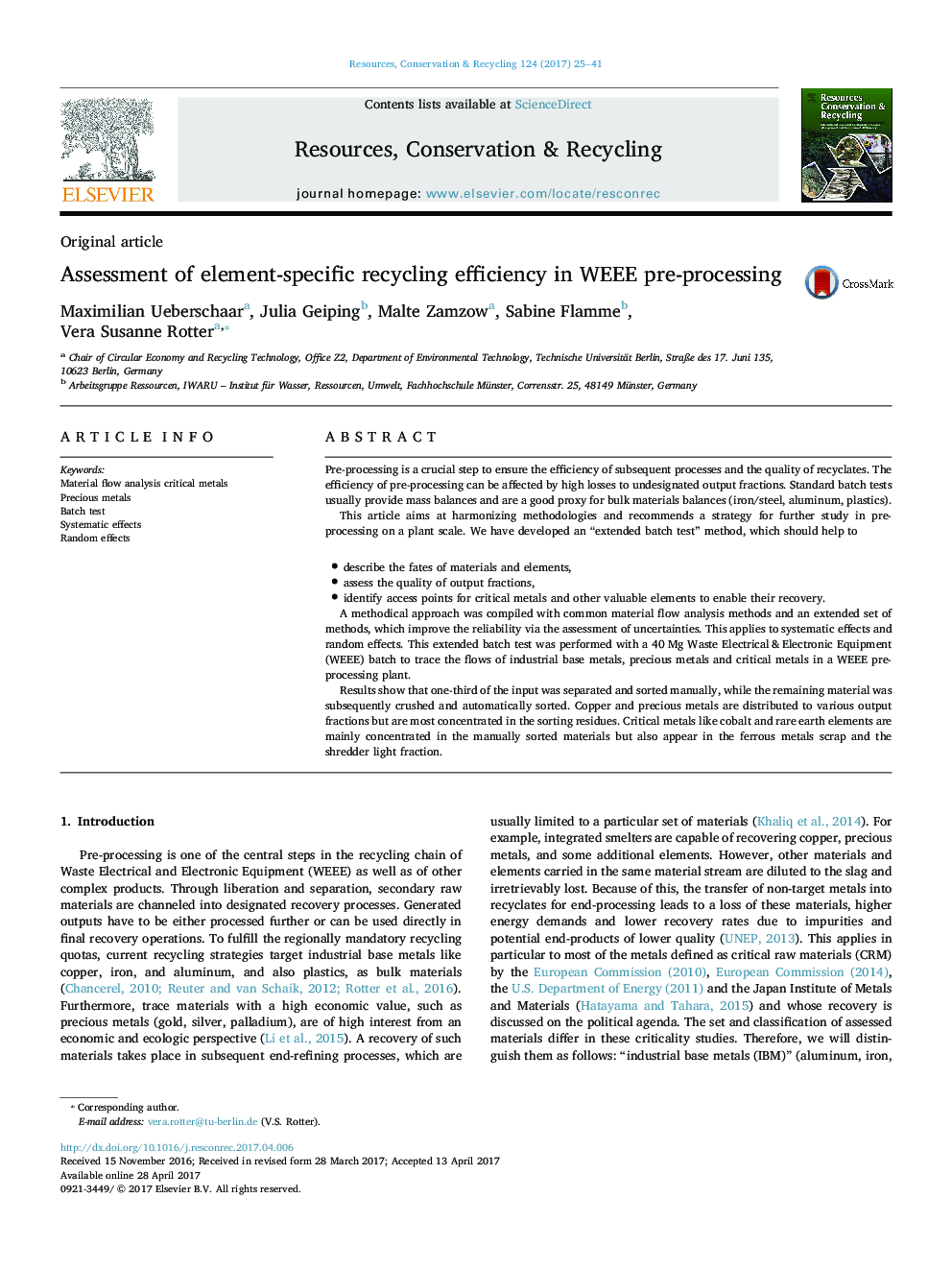| کد مقاله | کد نشریه | سال انتشار | مقاله انگلیسی | نسخه تمام متن |
|---|---|---|---|---|
| 5118722 | 1485668 | 2017 | 17 صفحه PDF | دانلود رایگان |

- Commonly used methods for executing MFA are not sufficient for reliable results.
- Presented “extended batch test” includes a set of tools for generating validated results.
- Industrial bulk materials highly efficiently sorted in WEEE pre-processing.
- Precious and critical metals dispersed in each output fraction in WEEE pre-processing.
- Precious and critical metals enriched in non-designated output fractions.
Pre-processing is a crucial step to ensure the efficiency of subsequent processes and the quality of recyclates. The efficiency of pre-processing can be affected by high losses to undesignated output fractions. Standard batch tests usually provide mass balances and are a good proxy for bulk materials balances (iron/steel, aluminum, plastics).This article aims at harmonizing methodologies and recommends a strategy for further study in pre-processing on a plant scale. We have developed an “extended batch test” method, which should help to
- describe the fates of materials and elements,
- assess the quality of output fractions,
- identify access points for critical metals and other valuable elements to enable their recovery.A methodical approach was compiled with common material flow analysis methods and an extended set of methods, which improve the reliability via the assessment of uncertainties. This applies to systematic effects and random effects. This extended batch test was performed with a 40Â Mg Waste Electrical & Electronic Equipment (WEEE) batch to trace the flows of industrial base metals, precious metals and critical metals in a WEEE pre-processing plant.Results show that one-third of the input was separated and sorted manually, while the remaining material was subsequently crushed and automatically sorted. Copper and precious metals are distributed to various output fractions but are most concentrated in the sorting residues. Critical metals like cobalt and rare earth elements are mainly concentrated in the manually sorted materials but also appear in the ferrous metals scrap and the shredder light fraction.
274
Journal: Resources, Conservation and Recycling - Volume 124, September 2017, Pages 25-41